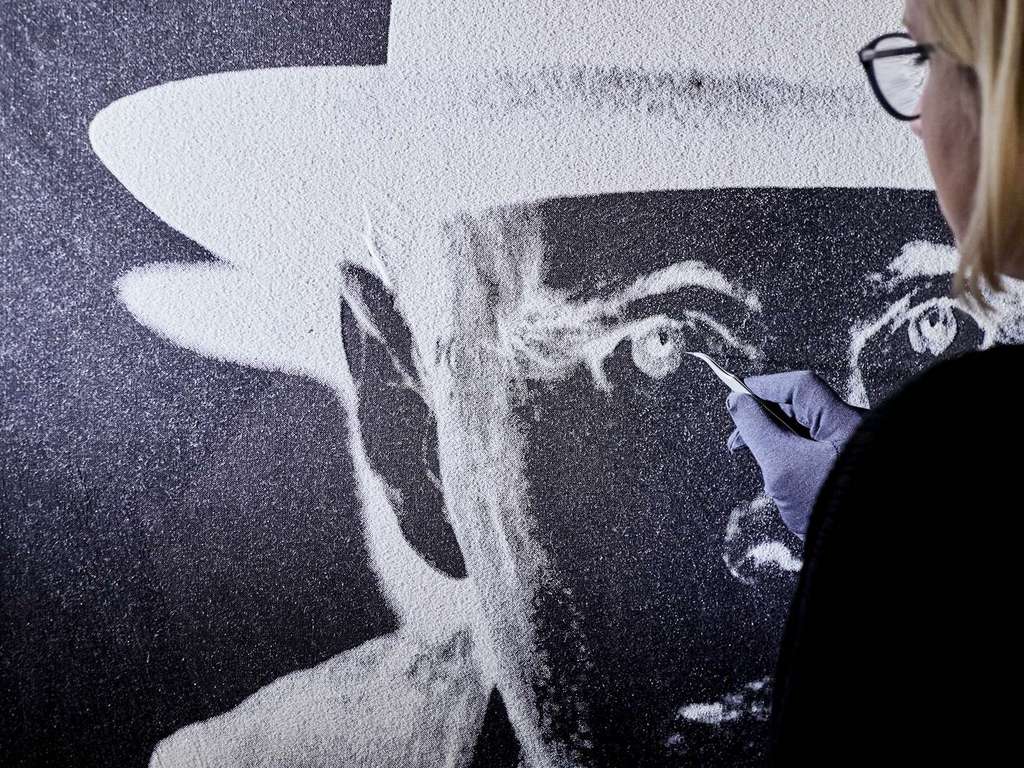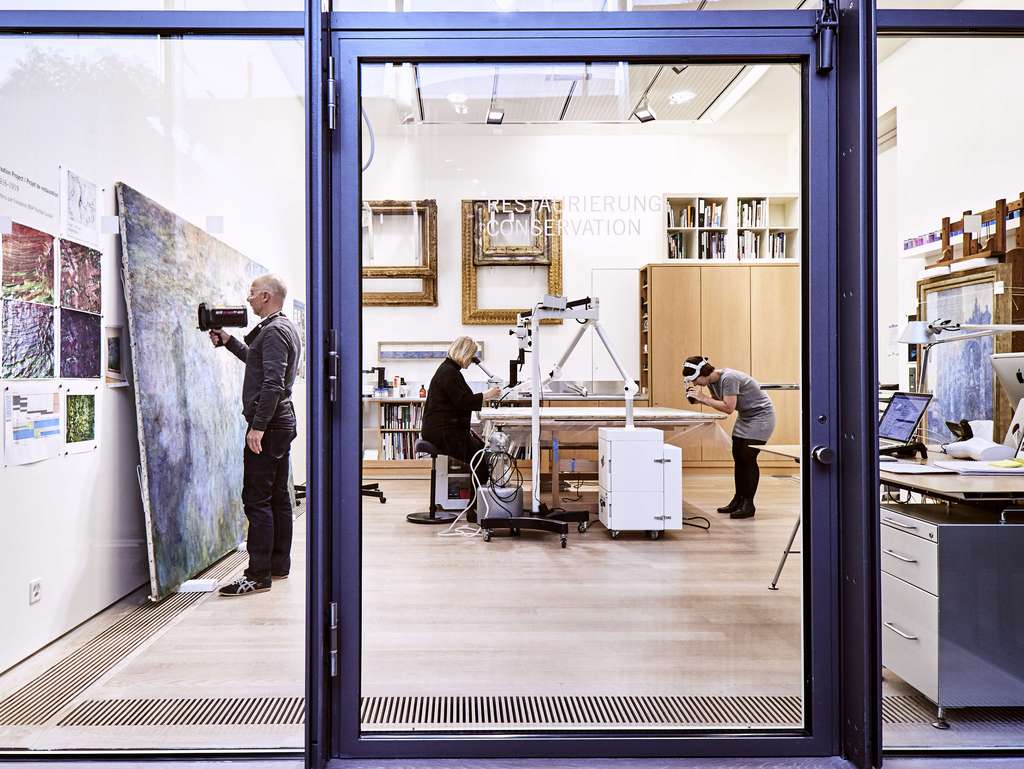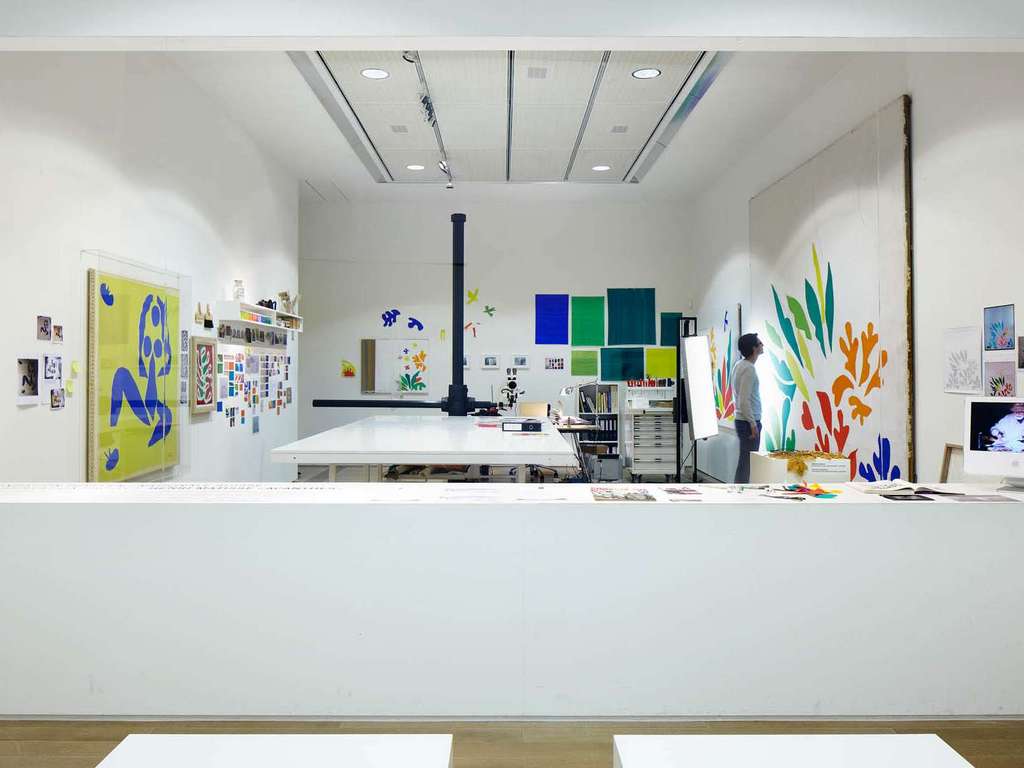Fragile plaster sculpture
The sculpture The King Playing with the Queen (1944) is one of Max Ernst's most important sculptural creations and is a highlight of the Fondation Beyeler's sculpture collection. The examinations conducted by the team of conservators provided important information about the sculpture’s construction and the interventions it was subject to over the years.
Art-historical background
Ernst executed the precious plaster version of The King Playing with the Queen, found today in the Beyeler Collection [[link]], during his American exile in 1944, a productive year. He later had several bronze versions cast. The piece shows a horned figure seated in front of a chessboard, playing. The prominent figure — the king of the game — is reminiscent of the Minotaur of Greek mythology, a monster that was half man, half bull. Ernst took the most important chess piece from the board and turned it into a chess player. The king protects the queen with his right hand and at the same time prevents her from advancing, while he hides another chess piece in his left hand. The demonic king is playing with his subjects according to his own rules — the game is playing itself.
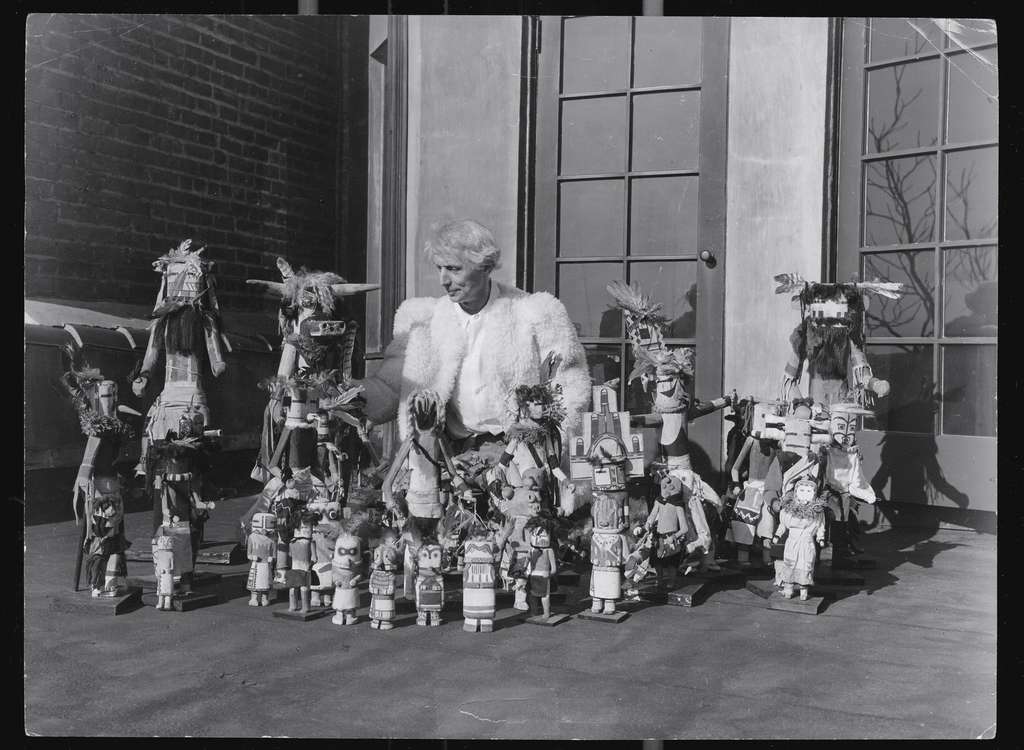
Max Ernst: Biography
As a student of psychology and art history at the University of Bonn, the German-French painter and graphic artist began to experiment with Expressionist, Impressionist, Cubist, and Futurist creative methods. In 1912 he participated in an exhibition of Rhineland Expressionists for the first time. He became acquainted with the Berlin Dadaists during a leave from the front in 1916, and three years later he created a Dada group in Cologne with Jean Arp. In 1922 he moved to Paris, where he joined the Surrealists. He used their “écriture automatique” techniques in collages, frottages, grattage and sculptures that he made out of found objects. His visionary cosmogonies are rooted in the tradition of Grünewald and Bosch.
Initial condition
Since the opening of the Fondation Beyeler in 1997, the sculpture had been displayed and moved inside the museum only with extreme caution. The piece was also unavailable for temporary loans. One reason for this was the fragile plaster material, which already showed cracks and breakage.
In addition to the issue of the work’s fragility, conservators wanted to understand the process by which the sculpture had been made. Indeed, Max Ernst's sculpture exhibits a structural peculiarity: old studio photographs show that he constructed the sculpture out of separate pieces. The surface of the sculpture also shows noticeable differences in coloring. Various historical layers of paint cover the original white of the plaster.
Structure of the plaster
High-resolution X-ray photographs provided revealing information about the structure of the plaster. The interior of the sculpture contains an armature made of wires of different strengths. Ernst also used fine metal mesh to support larger areas. The construction of the plaster sculpture was achieved by assembling the separate parts. He made molds and casts for the separate parts, reinforced them, and then assembled them.
The X-ray examination also provided concrete information about the sculpture’s repeated bronze casting. It revealed threaded rods, nails and screws inside the sculpture that were not used by the artist (figure 1). Enlargements of details on the X-ray photographs show that the original armature was cut in some places.
Examination and comparison with recently found archival material pointed to major interventions on the sculpture by the foundry. During the complicated casting process, the foundry first needed to take the sculpture apart and then reassemble it in its original form — a typical procedure in casting. The unpainted white areas of the sculpture (neck, shoulder, wrist, etc.) were plaster repairs effected by the foundry after the casting. The foundry also used plaster to reconstruct the original areas that had been lost during dismantling.
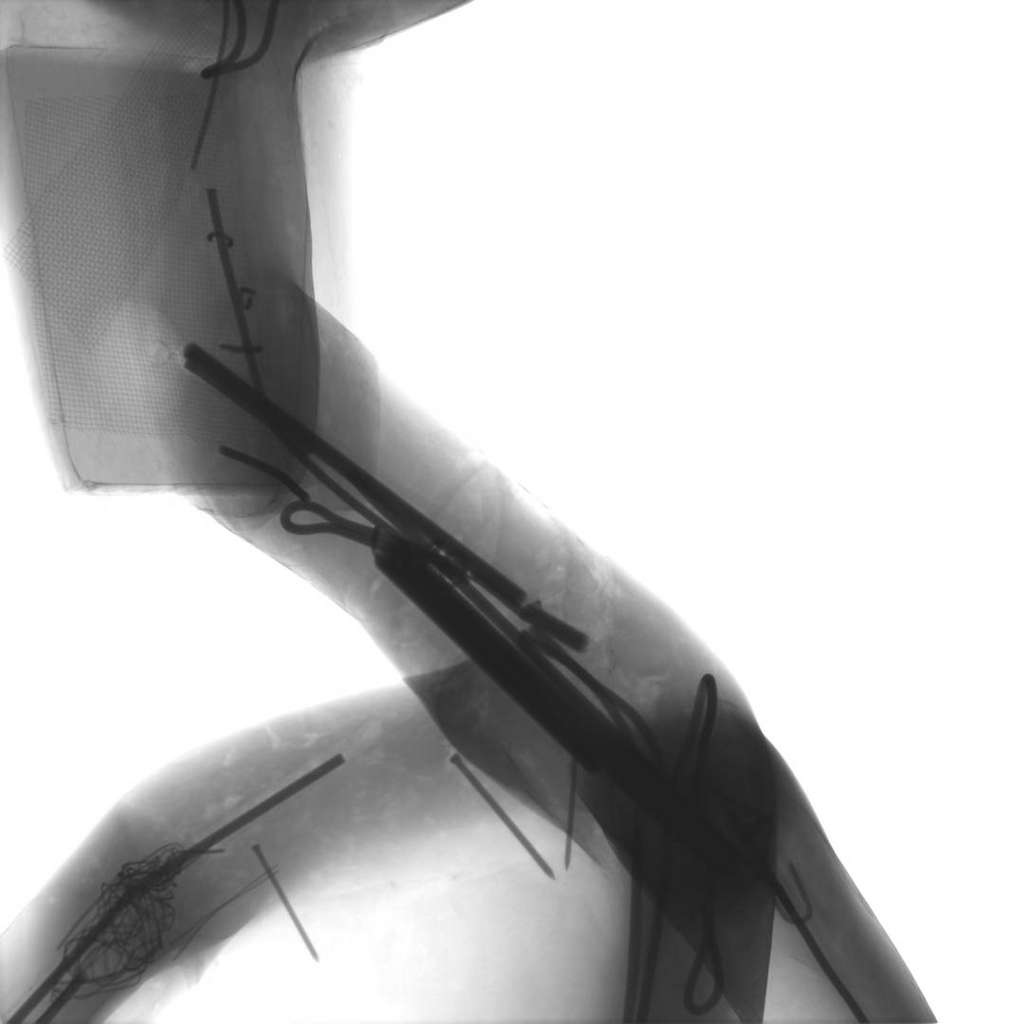
X-ray
Figure 1: A detail of the neck taken with X-rays shows the structural underpinnings of the sculpture. Reinforcements made from a variety of materials are clearly visible in the body of the plaster.
the artwork
Examination and comparison with recently found archival material pointed to major interventions on the sculpture by the foundry. During the complicated casting process, the foundry first needed to take the sculpture apart and then reassemble it in its original form — a typical procedure in casting. The unpainted white areas of the sculpture (neck, shoulder, wrist, etc.) were plaster repairs effected by the foundry after the casting. The foundry also used plaster to reconstruct the original areas that had been lost during dismantling.
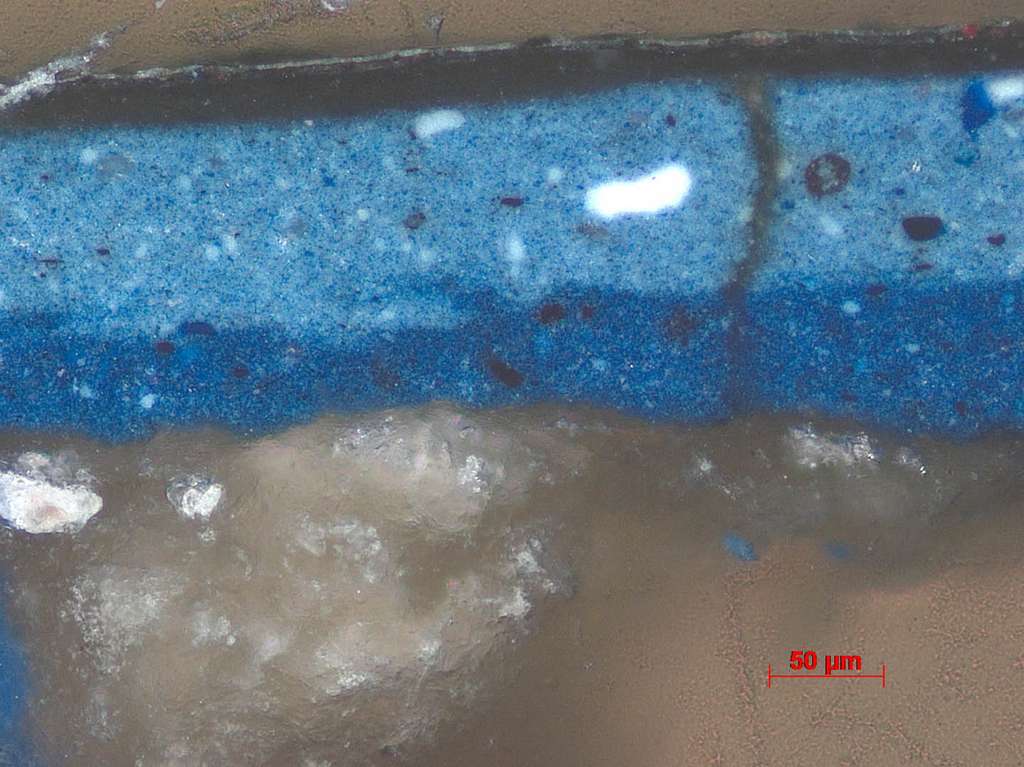
Coats of blue paint
Figure 2: An enlarged cross-section of the paint layer shows that the original version featured two coats of blue paint. The paint was applied shortly after the sculpture was created and is comparable to the pigments Max Ernst used in his paintings.
the artwork
Analysis of the paint layer
An analysis of the paint revealed that the sculpture was covered with two layers of blue paint. The blue paint is original and was applied by the artist himself shortly after making the sculpture (figure 2). The pigments and binders analyzed were materials typically also used by Ernst in his works on canvas.
For the viewer today, however, the original blue paint is hardly visible to the naked eye. The coats of blue paint are covered by various layers from the casting process and later interventions. A fashion photograph taken in 1945 shows the plaster sculpture coated in a uniform color shortly after it had been put together, confirming these observations (figure 3). The many layers and fragments of paint show the sculpture’s history: they are now part of the historical surface. A restoration of the original state is hardly possible given today's technical capabilities and ethical code.
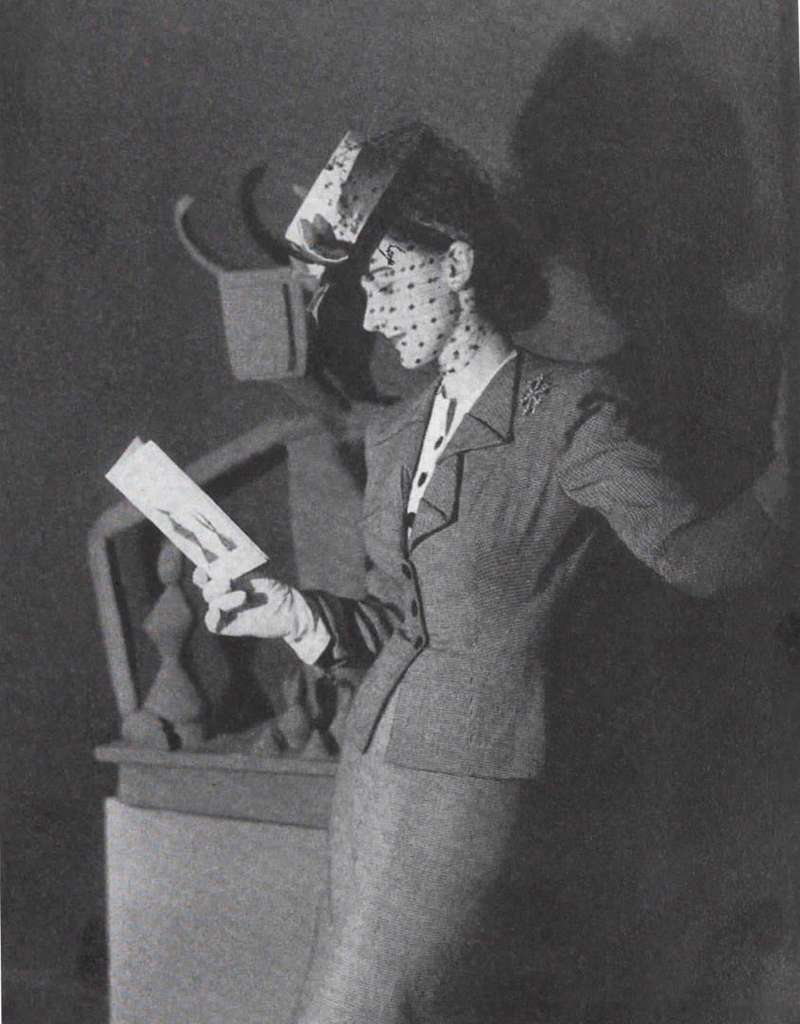
Historical photograph
Figure 3: In the background of this fashion photo from 1945 we see the sculpture in its original condition: a homogenous version without the present reconstructions at the neck, shoulders, elbows and hands.
the artwork
Other projects
„JOSEPH BEUYS“ - andy WARHOL
Andy Warhol is a central figure in American Pop Art and one of the twentieth century’s most influential artists. The painting Joseph Beuys (1980) is one of the few works that the artist decorated with a fine layer of diamond dust.
Overview - Conservation
Since 2001, a dedicated team has been working on the long-term preservation of the collection’s major works so that they will remain accessible to future generations.
„ACANTHES“ - henri MATISSE
After three years of extensive art-historical research, conservation, and restoration, the Fondation Beyeler completed the greatest conservation project in its history: the scientific examination of Henri Matisse’s Acanthes.
